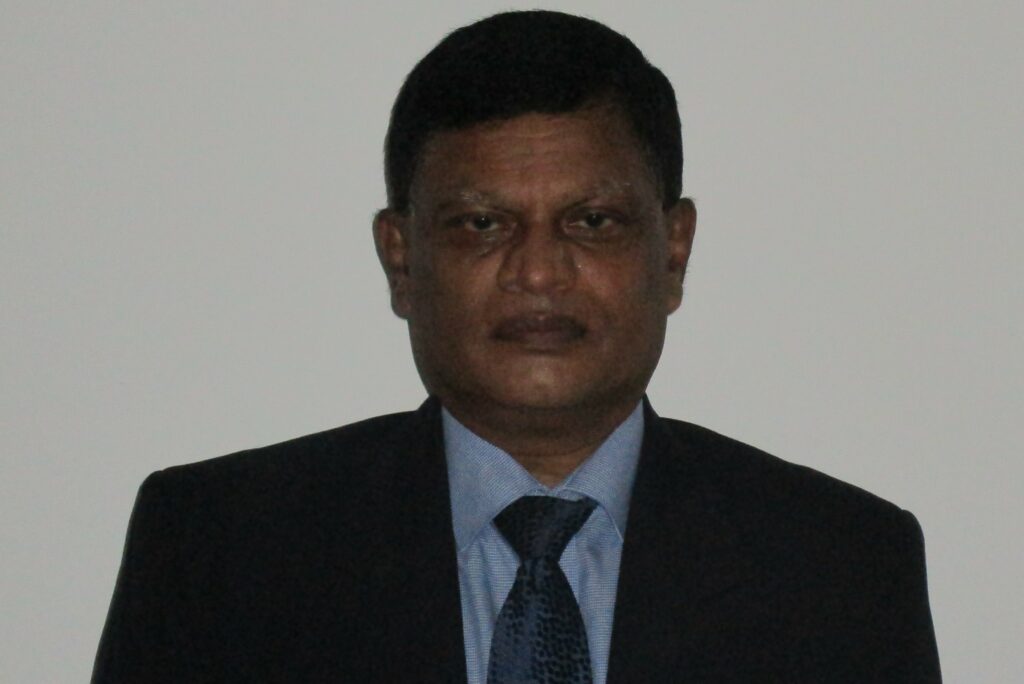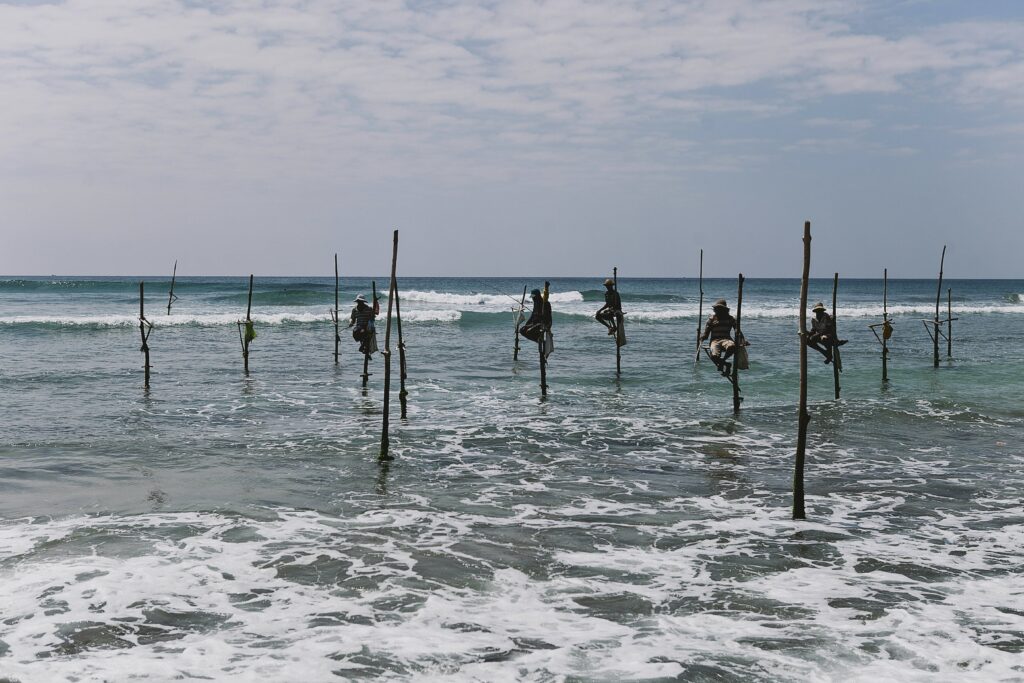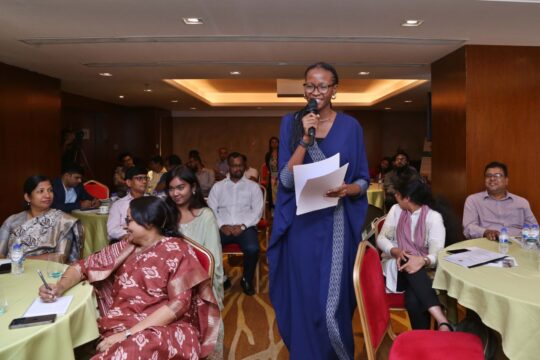
Landslides are one of the most common disasters in the world. Between 1998-2017, they affected an estimated 4.8 million people and caused more than 18,000 deaths. Sri Lanka experienced only minor incidences of landslides in the recent past. The annual average was less than 50 until the year 2002. The frequency of landslides in the country has drastically increased as a result of human interventions such as unplanned cultivation, non-engineered construction, and deforestation. Mr. Sunil Jayaweera, Director – Preparedness Planning of the Disaster Management Centre (DMC), Sri Lanka began his career at the National Building Research Organisation (NBRO). He has over 22 years of experience in tackling landslides and it has broadened his expertise in the field of disaster management.
The DMC was established in 2005 and Mr. Jayaweera joined six years later in 2011. The center had laid the foundation for the process of disaster management and also identified the key areas related to the process such as preparation, planning, awareness, risk mitigation, research, early warning, response and rescue operations, and providing relief assistance to the displaced by the time he joined. “DMC had commenced preparing subnational operation plans related to preparedness planning at district levels and the team of directors including myself was entrusted with the responsibility of preparing the national disaster management plan (NDMP)”, commented Mr. Jayaweera.
He detailed how the plan has evolved from the national scale to every divisional level in Sri Lanka, “We have developed operational plans for all twenty-five districts in the country mainly focused on the two key monsoon seasons i.e. South West and North East, as the most significant impact from hazards is during these rainy seasons”. He also stated that DMC’s head office senior staff review these plans and regularly. Additionally, it is mandatory for District Disaster Management Units (DDMCUs) of DMC to complete this task well in advance with the support of all relevant stakeholders in the respective districts. “We have devised 200 plans at divisional level and 4,000 at the community level thus far and apart from these various practical drills, exercises, and similar programs are carried out to create awareness among communities.”
Mr. Jayaweera’s team is actively involved in tackling the common natural and man-made disasters mostly water-related and constantly trying to understand the best approaches to be adopted based on past experiences and research jointly done with reputed academia. He connected previous disaster events to motivation for extensive planning, “Sri Lanka as an island nation frequently exposed to floods, cyclones, landslides, etc. DMC has mapped the distinct impacts of each disaster after the significant devastation experienced in 2004 due to the tsunami which hit the Indian Ocean.” He included that these plans anticipated the effects before, during, and after a disaster, “We have identified how best to address these impacts, what preemptive measures needed in terms of risk mitigation, creating awareness and providing training, developing standard operating procedures (SOPs), etc. to minimize the damage in terms of overall human fatalities and economic loss.”
The director concludes that the effectiveness of all these measures is very evident, especially during the recent Cyclone Burevi. The disaster hit Sri Lanka’s north and east regions as the fatalities, damage to property, and overall economic impact were very much minimal. He emphasized that the efficacy is the result of systemic operations that incorporated cooperation of all responders and stakeholders, “The proactive measures adopted by the relevant DDMCUs in those areas, especially at a challenging time amidst the COVID-19 pandemic and also the active role played by media and social media played a crucial role in averting any significant damages.” DMC had created greater awareness by that time. This improvement materialized through monsoon preparedness planning sessions, distribution of pamphlets, constantly updating stakeholders with the help of technical agencies such as the Department of Meteorology, Irrigation Department, Ministry of Health, etc. using virtual or online platforms and also through popular government and private media channels. The response and rescue operations were well coordinated with the help of the tri-forces and Police and post-disaster relief assistance provided by the international non-governmental organizations (INGOs), NGOs and other volunteer organizations helped the temporarily displaced persons to return to their homes within a short period.

Take it to the Township – the Village-level Strategies
The DMC has approached disaster preparedness as a national prerogative. Mr. Jayaweera accredits it to better resilience in line with a systemic plan: “The center coordinates directs, and monitors the measures for disaster preparedness and response plans with the provincial, district and local authorities. Strengthening local capacities is essential for emergency response. We understand that this will support our reach to the divisional and grama niladhari (village) levels.” He added that meticulous approaches also need to include officials of relevant government departments and other key stakeholders including tri-forces, Police, etc. “Medical facilities must be on standby as their service is indispensable during disasters. We coordinate and support health authorities on preparedness plans for emergency response for hospitals. Our collaboration with the Ministry of Education has implemented the School Disaster Safety Plan,” stated Mr. Jayaweera.
Sri Lanka’s exposure to multiple disasters has led the DMC to create response procedures for hazards such as floods, cyclones, droughts, and landslides. Mr. Jayaweera concludes that disaster response requires specificity. He cites the case of vulnerable communities and the need to implement various activities to secure their safety – “Supporting these communities starts with forming disaster management committees and sub-committees. You must also involve them on awareness on disaster management, hazards, and vulnerability.” A participatory method is applied to construct hazard maps for villages to know the safe locations and routes and conducting mock drills. He highlighted how these measures were successfully implemented in all communities, “Villages require provisions for enhanced capacity. We distribute equipment such as megaphones for early warning messaging and boats and anguls (canoe) for emergency response.”
The planning efforts highlighted the success of community-based and consultative processes. The DMC witnessed the highest degree of engagement from the community during this operation. “The model was extensive in addressing the many aspects of disaster response. We noted that these plans have to begin with information to present risk analysis, risk mapping, and compiling risk information,” stated Mr. Jayaweera. He emphasized including the community during the resilience building process – “The further development of early warning systems and safe centers, and test of innovation preparedness initiatives assured us that communities are better adapted to disaster impacts. Simulation drills and capacity-building activities instilled communities and stakeholders with a sense of ownership.”
While the village-level comprehensive disaster preparedness plan has proven to be very advantageous, expanding it across Sri Lanka would lead to further complications. Mr. Jayarweera infers, “Our experience demonstrated that replicating the preparedness plan would have unique challenges. The availability of resources varies in different regions. Developing region-specific plans must incorporate financial assistance to procure resources.” A systematic national plan needs to create and sustain networks and platforms. The director observes that local responders and stakeholders have to collaborate and participate in networks that connect them to the national platforms, “The common goal should be empowering these communities through capacity building. Our responsibility at the national level is to create communication channels that let local partners know their voices are heard. The authorities and stakeholders at all levels need to improve participation in disaster risk reduction (DRR) planning, and implementation and monitoring activities.”
The Sri Lanka Preparedness Partnership
The DMC is the leading disaster management agency in Sri Lanka. It is mandated to coordinate and implement national and subnational level programs to reduce the risk of disasters with all relevant stakeholders. Mr. Jayaweera expressed that the Sri Lanka Preparedness Partnership’s (SLPP) – the national chapter of the Asian Preparedness Partnership (APP) in Sri Lanka – activities align with the DMC’s vision for a wider network: “Our approach as a government agency is to expand to all potential partners. The SLPP has been instrumental in linking us with civil society organizations (CSOs) and the private sector. We have built strong, sustainable, and long-term partnerships.” He views the national preparedness partnership as initiative-driven. “SLPP has ingrained itself into the disaster response environment through its strive reach every level. Affiliated institutes such as divisional level Emergency Operation Centers (EOCs) continue to closely work with the partnership. Representatives from the national to the grama niladhari support the SLPP’s activities at the ground level.”

The DMC and SLPP have partnered to incorporate national and local level disaster risk management plans as they move forward. Mr. Jayaweera notes that mitigation, preparedness and response, and recovery activities must be aligned with one plan and policy – “The SLPP has supported our coordination efforts. Moreover, their strive for localization has strengthened our collaboration and reach with local stakeholders. We also believe that cooperation will improve fundraising efforts to address the specific needs of various communities. These commitments and support helped us leverage resources for monsoon preparedness and response from all sectors this year.”
Being prepared for disaster response starts at the policy level. Mr. Jayaweera points out the complexity of creating and engaging policies – “Any official guideline, mandate, or standard operating procedure (SOP) takes a prolonged time to develop because of the numerous considerations and the changing disaster climate. The SLPP has supported in initiating NDMP mandates, updating the DMC guidelines for institutional disaster management plans and SOPs, and developing local authority level disaster management plans.” The DMC is currently under the process of contextualizing humanitarian standards for safety center management under the SLPP. Knowledge is also the key to advancing the disaster response environment according to Mr. Jayaweera, “Seeing what worked around the world is the first step for your framework. The SLPP has built our technical capacity through national and international programs. The learning experience from the other APP member countries through the regional technical working groups and cross-learning discussion have been particularly insightful.” The director seeks to consolidate the knowledge and experiences into the context of Sri Lanka to meet and implement international standards to national preparedness and response plans.
Landslides demolish everything in its path, leaving only remnants of the community but there is always an opportunity to rebuild. The impacts made Mr. Jayaweera even more tenacious in his perspective for a resilient Sri Lanka. The DMC forges ahead with strategies and policies that build the avenue optimal disaster response and preparedness. They progress with the scope of remodeling and update existing strategies to best address the changing needs of the country.
Click the link below to read the full case study:
Cover Photo by Freepik.


